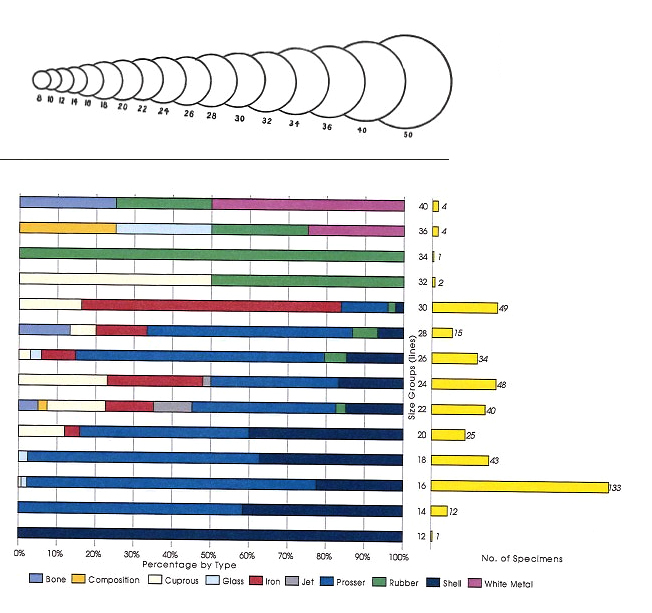
In the late nineteenth century, buttons were classified and sold by their sizes using an old French system where each ligne (line) group corresponded to a specific diameter. The line drawing shown at top is a button line-size chart as illustrated in the 1895 Montgomery Ward & Co. catalog, and the line 40 size is a 1-inch diameter button. These size categories were used to analyze more than 440 buttons from the Williams farmstead.
The graph above shows the breakdown of the buttons by material and size groups. The smallest buttons (line sizes 12 to 20) were probably used on shirt and blouses, and these were mostly shell and Prosser buttons. Medium and large buttons varied more by types, and they were probably used on a wide variety of clothing such as coats, vests, jackets, and dresses. The largest buttons (line sizes 30 and above) were probably large coat buttons, and these are mostly iron with lesser numbers of Prosser, rubber, brass, bone, and white metal.